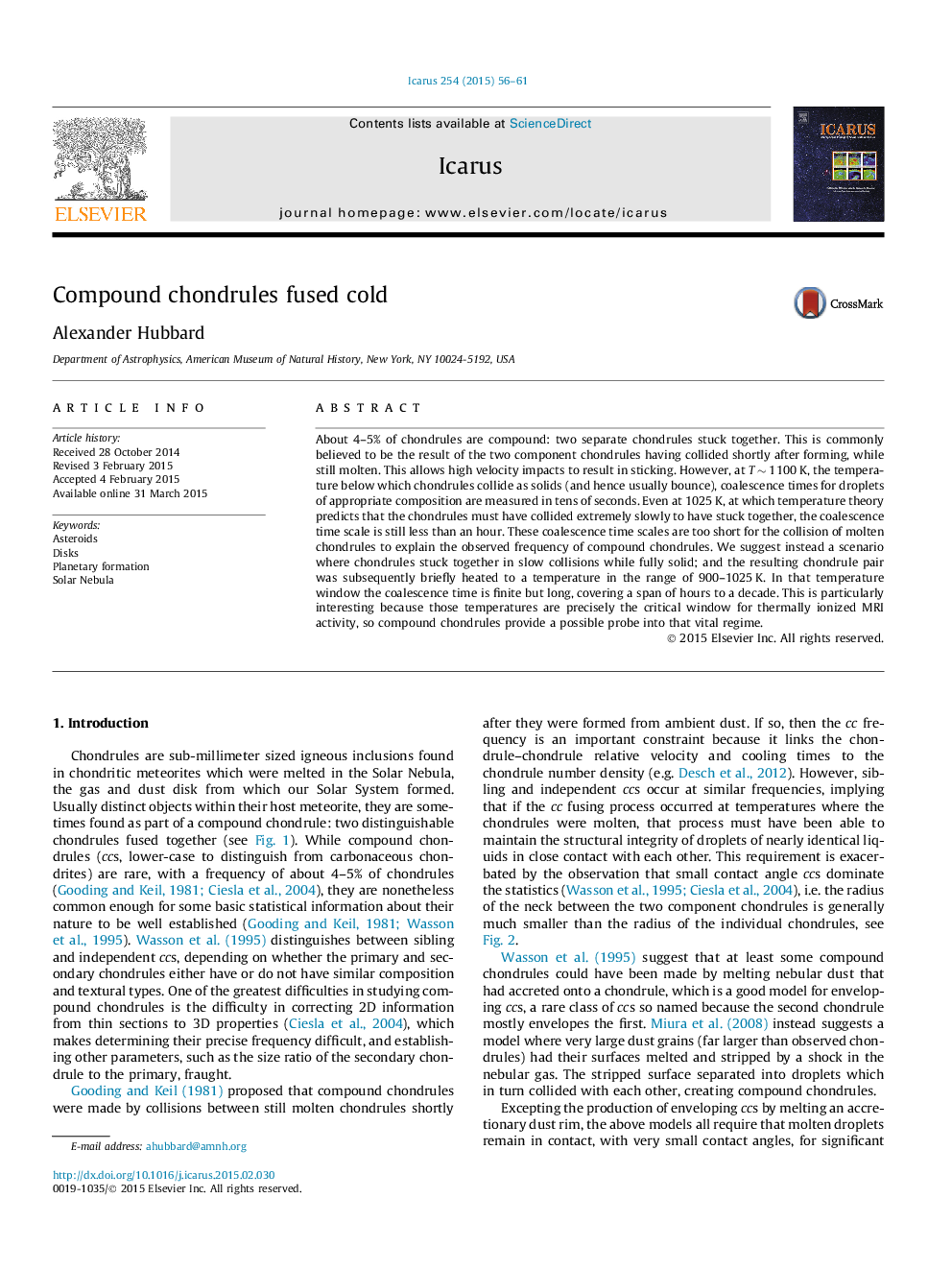| Article ID | Journal | Published Year | Pages | File Type |
|---|---|---|---|---|
| 8136259 | Icarus | 2015 | 6 Pages |
Abstract
About 4-5% of chondrules are compound: two separate chondrules stuck together. This is commonly believed to be the result of the two component chondrules having collided shortly after forming, while still molten. This allows high velocity impacts to result in sticking. However, at T â¼Â 1100 K, the temperature below which chondrules collide as solids (and hence usually bounce), coalescence times for droplets of appropriate composition are measured in tens of seconds. Even at 1025 K, at which temperature theory predicts that the chondrules must have collided extremely slowly to have stuck together, the coalescence time scale is still less than an hour. These coalescence time scales are too short for the collision of molten chondrules to explain the observed frequency of compound chondrules. We suggest instead a scenario where chondrules stuck together in slow collisions while fully solid; and the resulting chondrule pair was subsequently briefly heated to a temperature in the range of 900-1025 K. In that temperature window the coalescence time is finite but long, covering a span of hours to a decade. This is particularly interesting because those temperatures are precisely the critical window for thermally ionized MRI activity, so compound chondrules provide a possible probe into that vital regime.
Related Topics
Physical Sciences and Engineering
Earth and Planetary Sciences
Space and Planetary Science
Authors
Alexander Hubbard,
